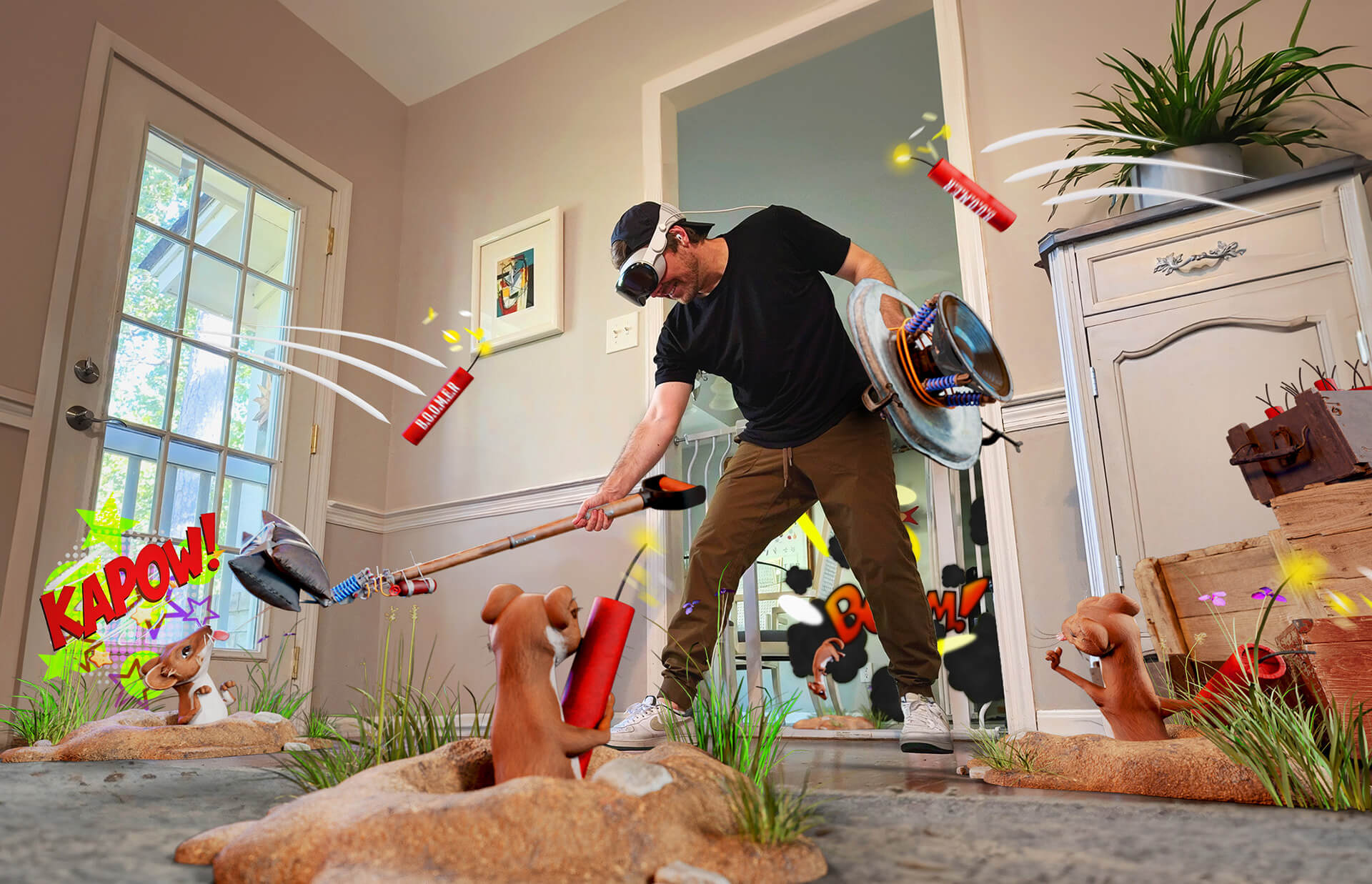
A recent survey shows that 51% of customers said that brands are failing to meet their increasingly high expectations and 76% expressed that it is easier than ever to take their business elsewhere. Faced with these numbers, it is even more important for eCommerce brands to evolve. They will need to find new ways to not just meet but exceed customer expectations. Augmented reality in eCommerce opens a whole new opportunity for brands to wow the customer.
A Google survey found that 66% of those surveyed are interested in using augmented reality for help when shopping. This type of shopping experience provides an immersive experience that lets customers interact in real-time with products in a virtual environment. Here we’ll discuss AR and how eCommerce brands can leverage it to build their brand.
Why Consider Augmented Reality in eCommerce Business for Your Brand
Why do so many people still prefer brick-and-mortar stores when shopping online is easier? Because they want to try the product before purchasing it. According to a recent study, 71% of customers expressed they would shop more often if they could use AR.
Try Before They Buy
With augmented reality in eCommerce, customers can control the product in a digital world to see how it would look on them, or how it would look in their space. Size, color, features, room placement and more are just some of the features customers can experience in a digital world. Trying the product beforehand helps the customer feel more connected to the product.
Increases Customer Satisfaction and Reduces Returns
Trying out a product in a virtual environment makes the product more tangible. It improves buyer confidence which minimizes the chance for buyers remorse. As a result, they are less likely to return their product. Ultimately this saves companies on shipping and restocking costs.
Makes the Product Seem More Valuable
How can high-end restaurants get away with charging so much for a meal? It’s the experience that you’re paying for. One that includes fancy décor, linen and expensive flatware. It’s all part of the experience that ultimately makes the product look more valuable. The same holds true for online shopping. A recent survey indicated that 40% of shoppers said they would pay more for an item if they could try it out via AR. That same study also revealed that 72% of people said they purchased something they weren’t planning on buying after using AR.
Makes the Product More Memorable
Bounce rate is when a customer shows up on your site, takes a glance around for a moment and then leaves. They may have just been “window shopping” or perhaps they didn’t have the budget. Either way, they left without making a purchase. Online retailers who use AR can keep online shoppers on their website longer and make their products more memorable.
Keep up to date
Sign up to our newsletter for exclusive updates and content, delivered directly to your inbox.
How Can eCommerce Utilize AR
In today’s competitive landscape, brands must leverage new technology to offer a more engaging shopping experience. There are many ways to use AR as a part of your brand strategy.
Virtual Try-On

One of the first brands to use virtual try-ons was Converse. With the Sampler App, customers could use their iPhone’s camera to see how the shoes looked on them in augmented reality. They could also share the shoes online and make purchases within the app.
Virtual try-ons in augmented reality works in much the same way as the concept of “filters” in the popular social media app, Snapchat. is a concept where a digital three-dimensional view of the clothing automatically appears on the person. The technology responds to a person’s movements and reacts in sync to provide a more realistic experience with the product.
There are a variety of products that can benefit from offering this type of experience for shoppers such as
- Shoes
- Accessories
- Cosmetics
- Furniture
The benefits include:
Increases Revenue: According to Forbes Insights, 40% of marketing executives report that personalization has a direct impact on sales and profits.
Saves Time: Testing items in the store can be time-consuming. Doing so in a virtual world allows customers to have the same experience at home at a time that works for them.
Match the Look: Buyers can experiment with items and match them to outfits to get a true sense of how something will look when purchased together.
Consult With Friends: Many augmented reality apps let users post their potential purchases to social media to get feedback from friends.
Reduce Hygiene Issues: Trying things on virtually minimizes the chance of spreading germs to other shoppers.
Let’s chat
Not sure where to start? Book a free strategy call with us to get started! No strings attached.

Augmented Reality in eCommerce Marketing Campaigns
Winning the battle for attention in a crowded market is more than just challenging. It can be near impossible without the right strategy. Using AR in marketing is an ideal way to rise above the competition by providing customers with an experience they won’t soon forget.
Complement Marketing Materials
AR lets companies inject new life into printed marketing materials such as flyers, brochures and business cards. For example, a company can use AR on a business card so that when a customer scans A QR code on the card, they experience a virtual environment that shows them:
- A video of the product
- Email address or other contact information
- Invitation to social media platforms
- Invitation to an event
- A discount code
Augmented Reality in eCommerce Creates Buzz
Buzz marketing relies on word-of-mouth marketing. It assumes that the power of this approach means more than standard broadcast messaging. Customers are more likely to trust a brand referred to them by a friend or a relative because it is seen as unbiased and coming from someone they trust. Providing an unexpected AR experience can get people talking about your brand and increase the chances of it going viral. Word-of-mouth marketing has the amazing side-effect of being free marketing.
Enhanced Shopping Experience Using Gamification
Humans are competitive by nature and can be easily motivated by rewards. Brands can capitalize on this by using gamification in their marketing efforts. Gamification refers to applying traditional gaming principles to the shopping experience to encourage customer participation. A common example is a treasure hunt where customers use their app’s camera to look for hidden clues inside the game, a magazine or a print ad.
Rewards – Rewarding a customer when they complete a task finding a clue gives them a sense of satisfaction. Rewards can include badges, points, discounts, store credits or gifts.
Progress Bars – The human brain does not like outstanding incomplete things. Thus, a progress bar motivates a customer to keep going until they complete the task. Using a progress bar encourages customer engagement with the game.
Challenges – A challenge plays on the mind’s desire to problem-solve. Giving customers a challenge allows retailers to create a tailor-made challenge that keeps customers motivated.
In-Game Currency – In-game currency is providing customers with a reward they can use in the app or the store.
Help Customers Using Interactive Manuals
Text manuals are often boring and too complex. They lack visuals and rely on the assumption that everyone learns by reading. This is unfortunately not the case. Augmented reality enables companies to take a completely new approach to an old learning medium.
The benefit of using interactive manuals allows customers to learn things visually which will minimize their frustration. It can also increase the chance they’ll remember the concepts. AR user manuals also remove language barriers that make text manuals too difficult to understand. Companies can use virtual manuals for a variety of purposes.
Unboxing and Installation Guide – Giving customers an interactive manual on how to install a product increases their confidence in using the product.
Product Features Introduction – A product features demo lets companies show customers how the product works so they can get the most use from the item.
Troubleshooting – Customers who are frustrated with a product are likely to return it. Giving them a virtual demonstration of how to fix common issues can help prevent this problem. It also decreases the number of support calls they would normally make to get help.
Examples of eCommerce Applications of AR
Many popular brands are using augmented reality in eCommerce applications. These five are some of the most notable.
Sephora
“Digital and innovation have always been part of our DNA at Sephora,” says Mary Beth Laughton, Sephora’s executive vice president of Omni retail. “We are very focused on our customers, and we know that her life is increasingly reliant on digital. So we know to be successful as a retailer, we’ve got to be where our clients are, and give her tools and experiences that meet her needs.”
Sephora’s Virtual Artist app empowers customers to try on makeup from anywhere. The app uses facial recognition to scan the customer’s eyes, lips and cheeks. Buyers can then see how makeup items would look on their faces.<
Customers can view product demonstrations and get step-by-steps for where to place the makeup on their face and how to blend them to achieve the desired look. They can also color match a specific makeup to their outfit.
Nike
According to Nike, three out of five people are likely wearing the wrong size shoe. The sneaker and apparel giant says that length and width don’t provide early enough data to get a shoe to fit comfortably.
Nike Fit is an app that uses a smartphone’s camera to scan a customer’s feet. The app collects 13 data points. Nike says the app can measure with accuracy within 2 millimeters. Once the scan is complete, the app gives customers a recommended best fit based on their measurements. The app can even tell a customer if one foot is smaller or larger than the other.
Customers can then make purchases directly from the app. They can also save this information to their online Nike profile to use for future purchases.
Wayfair
“Leveraging augmented reality, the Wayfair app allows shoppers to transform their homes into virtual showrooms, allowing them to see their favorite products up close and at every angle – all in their very own space,” said Steve Conine, co-founder and co-chairman, Wayfair.
Using augmented reality in eCommerce for furniture retailers have long faced challenges with transitioning online. The shipping costs for heavy items have made the option challenging for most. Additionally, customers still want to see the product before making such a major purchase.
Wayfair’s augmented reality app lets customers visualize furniture in their homes before making a purchase. The shopper takes a picture of the room and the app recreates a virtual 3D representation. Customers can shop for items in the Wayfair catalog and place those items in their 3D room to see how the items would look. The tool also features a room designer that allows customers to test different layouts and room configurations.
Ikea
In 2014, the popular home furnishings brand made the debut of their virtual reality catalog, Ikea Place. “IKEA Place makes it easier to make buying decisions in your own place, to get inspired and try many different products, styles and colors in real-life settings with a swipe of your finger,” said leader of digital transformation at Inter IKEA Systems Michael Valdsgaard in a press release.
The app allows users the chance to see how any item in the Ikea catalog fits in their space. Shoppers can save items to their favorites and share their ideas on social media. Additional features include:
Multi-Placement: While many furniture apps only allow customers to view one item in the room at a time. The Ikea app lets users view multiple items by dragging and dropping them to specific spots in the room.
Room Sets – With room sets, customers can select a theme and the app suggests an entire room package (a set) to try in a room.
“For You” Feed – The app provides a feed of inspiration, tips and news tailored to the customer’s interests.
Visual Search – The visual search function lets users capture an idea “on the fly.” If a customer is out shopping and sees a piece they like, they scan the item and the app will search for similar items in the Ikea store.
Amikasa
The Amikasa augmented reality app lets shoppers redecorate a room using furniture, flooring and paint colors. Shoppers can choose from one of the app’s predefined rooms or they can make a custom layout. Customers can then experiment with various design features. A walkthrough feature lets them walk through a 3D version of the room to get a personalized experience in the space. The app also lets customers share their ideas with friends on social media or email.
Augmented reality in eCommerce is no longer something brands can ignore. It has become a technology that is necessary for companies to gain a competitive edge, increase customer satisfaction, and increase revenue. Implementing this strategy can be complex— having an expert in the field as a partner is critical to success.
Rock Paper Reality has over a decade of experience with helping companies leverage augmented reality as a business strategy. Are you ready to embrace AR for your business? Get in touch with us and learn more about how we can help transform your brand into a household name with AR.
